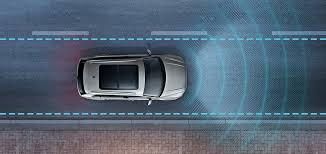How lane assist work in a car while driving:
17-Sep-2024

How Lane assist technology enhances your driving experience by keeping you safely within your lane.
The Basics of Lane Assist Technology
Lane assist technology, also known as lane-keeping assist or lane departure warning, is an advanced driver assistance system (ADAS) designed to prevent accidental lane departures. By leveraging sensors and cameras, the system monitors the vehicle's position within the lane and provides alerts or corrective actions if it senses that the car is drifting out of its lane without the use of turn signals.
Modern lane assist systems can either warn the driver through visual, audible, or haptic feedback or take more proactive measures, such as applying gentle steering corrections to keep the vehicle centered within its lane. This technology is particularly useful on highways and long road trips, where maintaining lane discipline can significantly enhance safety.
How Lane Assist Detects Lane Markings
Lane assist systems primarily rely on cameras mounted on the front of the vehicle to detect lane markings on the road. These cameras are typically positioned behind the rearview mirror and are capable of capturing high-resolution images of the road ahead.
The captured images are processed by the vehicle's onboard computer, which uses advanced algorithms to identify the lane markings. The system then continuously tracks the vehicle's position relative to these markings. When it detects that the car is approaching or crossing a lane boundary without signaling, it triggers alerts or corrective actions.
Different Types of Lane Assist Systems
There are generally two types of lane assist systems: Lane Departure Warning (LDW) and Lane Keeping Assist (LKA).
Lane Departure Warning systems are designed to alert the driver when the vehicle is about to unintentionally drift out of its lane. These alerts can be visual indicators on the dashboard, audible warnings, or even vibrations in the steering wheel or seat.
Lane Keeping Assist systems, on the other hand, go a step further by actively intervening to prevent lane departure. If the system detects that the vehicle is veering out of its lane, it can apply gentle steering inputs to guide the car back to the center of the lane. Some advanced systems can even work in conjunction with adaptive cruise control to provide semi-autonomous driving capabilities.
Benefits of Using Lane Assist While Driving
One of the primary benefits of lane assist technology is enhanced safety. By actively monitoring and maintaining the vehicle's lane position, lane assist systems can significantly reduce the risk of collisions caused by unintentional lane departures. This is particularly beneficial on highways, where lane discipline is crucial for safe driving.
Additionally, lane assist can reduce driver fatigue. By taking over some of the steering responsibilities, the system allows drivers to focus more on the road ahead and less on maintaining lane position. This can be especially helpful during long drives, making the journey more comfortable and less stressful.
Limitations and Considerations for Lane Assist
While lane assist technology offers numerous benefits, it is not without limitations. One of the primary challenges is that the system's effectiveness depends on the quality and visibility of lane markings. In conditions where lane lines are faded, obscured by snow or rain, or not present at all, the system may not function properly.
Another consideration is that lane assist is not a substitute for attentive driving. Drivers should always remain vigilant and in control of their vehicle, as lane assist systems are designed to supplement, not replace, human judgment. It's essential to understand that these systems have their limitations and should be used as an aid rather than a primary means of maintaining lane discipline.

 Loading..
Loading..